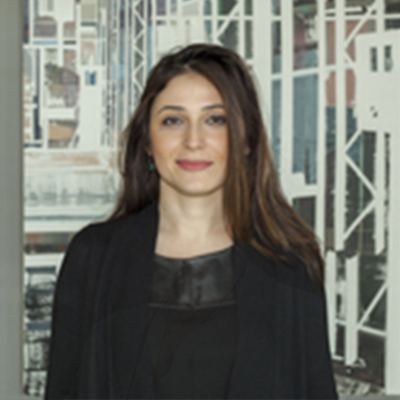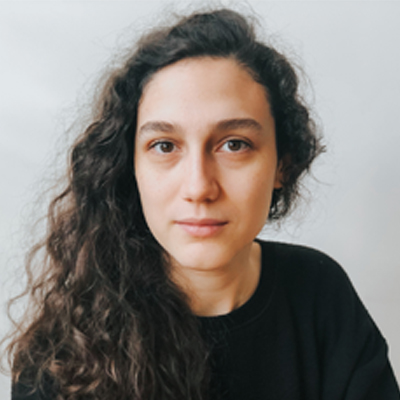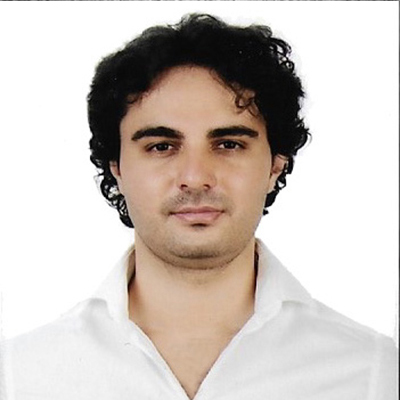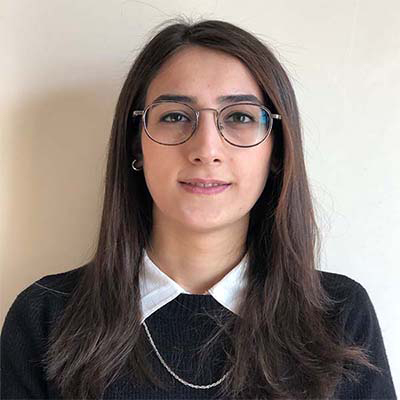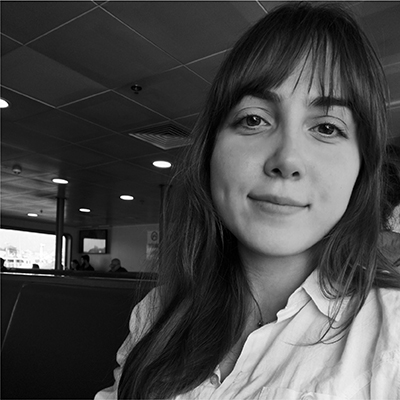MBL 549E Special Topics in Architectural Design Computing: Material-based Computational Design in Architecture
2020-2021 Fall Term
This course introduces the role of materials in the architectural design process; assessment of the material, form, and performance in natural systems integrally; computational design process run by materials in architecture; properties of materials affecting architectural design; the relationship between structure, performance, optimization, and digital fabrication methods; design between scales; reinterpreting material systems in architecture by digital design and fabrication methods; material synthesis in architectural design by evaluating different types of parameters. As a term project, participants identified a research problem and developed a solution towards that by the use of material-based computational design methods in 2020-2021 Fall Term.
Thanks to the contributors of the course:
Alperen Temur, Barış Doğa Çam, Dilara Temel, Nijat Mahamaliyev, Doğukan Şamdancı, Çiğdem
Köseoğlu, Dilara Saatçi, Özgün Şimşek, Sebahat Sevde Sağlam, Nurdan Akman, Adel Gürel, Özlem Çavuş, Berkay Öztürk, Mert Ulusavaş, Pelin Gül Arman, Zeynep Candar.
Auxetic Metamaterials
Nijat Mahamaliyev, Alperen Temur, Doğukan Şamdancı
The research discusses ‘MetaMaterial’ as a well-organized structure that can perform unexpected reactions (behaviors under load) to actions (forces, loads). At the beginning of the experimentation, several auxetic structures (such as tesseract, vintiles, honeycomb-1, cross, and octet) were examined by using a plug-in for Grasshopper, Interlattice. The plug-in has been used for producing cubes which are based on the principle of arraying determined cell type in the cartesian system. After the examination, to further analyze their behavior under load, selected modules were printed in the size of 3 cm x 3 cm x 3 cm with both PLA and TPU filaments. As a result, cubes, have been produced from interlattice’s cell types. Under the three levels of loads, the behavior of each structure has been analyzed. The three loads were: 337g cement-filled glass bottle, 883g plaster filled bottle & 1900g oil bottle. At the first stage, due to its rigidity, PLA modules were used. However, PLA modules did not show the expected deformations. They either broke or did not change their shapes. Due to their shape-memory capability modules which are printed with the TPU filament were selected. Because of their structural orders, various reactions/responses of the modules as buckling, enhancing, controlled shrinking & more were analyzed with physical experiments under the determined loads. The experiments had been recorded with precision and the records have been shared.
Bio-Seperator
Dilara Saatçi, Sebahat Sevde Sağlam
Biodegradable bioplastics, made from starch and vegetable peels, have minimal impact on the environment. They represent similar properties to plastic. Bioplastic mixtures allow the material to reveal different properties such as being soft, solid, rigid, fragile, sticky, liquid etc. by combining those different properties of a single composite material. Thus, new performances can be gained. In the study, series of material tests by physical models were undertaken to explore characteristics of different types of bioplastic mixtures. Further studies are undertaken towards integration of biodegradable bioplastics with form-finding and structural performance analysis.
Polycement: A Material Research On Funicular Shell Structures
Barış Doğa Çam, Dilara Temel
Additive manufacturing techniques are being widely used today across different fields and scales, ranging from product design to architecture. However, the integration of these techniques with existing methods of fabrication still remains an uncharted territory. In this study, a technique was developed for the construction of concrete funicular shell structures and a possible integration of polymer additive manufacturing with concrete construction was investigated. Throughout the study, various funicular shells were designed using physical simulations for form finding. Then, lattices were designed following the shell geometry. Prototypes of these lattices were fabricated using a 3D printer and a concrete mixture was applied on top to create the shells. Thus in this study, Polycement is presented as an innovative approach as to how we think of the integration of additive manufacturing and reinforced concrete construction which offers many potential benefits, such as structural lightness, material economy, and accurate distribution of loads.
Comparative Analysis Of Material Usage In Different Structural Systems
Pelin Arman, Nurdan Akman
Structural systems play a key role in both the architectural design and the construction process. Today, with the development of computational design approaches, studies on the relation of carrier systems and material have diversified. In this study, traditional perpendicular skeleton frame, topology optimized skeleton frame and L-system skeleton frame structure were analyzed comparatively. Within the scope of the study, material behavior according to the structural system types was researched on wide span and pavilion scale. In this context, experiment sets in different scales were created and applied to structural system types, each made of different materials: wood, reinforced concrete and steel. The systems created have been tested through finite element method (FEM), a structural performance simulation method. The obtained data were compared in the context of column-beam dimensions, the amount of material usage and the ground floor usage area. In this way, structural system material-based design potentials were investigated.
Shape Optimization of Acoustic Wood Panels Using Simplex Noise Algorithm
Mert Ulusavaş
Acoustics is an important factor in the wellbeing of people especially in urban spaces. Speech clarity and intelligibility in work places, schools are essential. The acoustical properties of a room determined by how the form of the room shapes the sound energy within and absorption coefficients of materials that are used (Peters, 2009). Therefore, this issue should be considered from material-based computational design. This study aims to present a form finding method for acoustic wood panels to achieve better speech intelligibility in room acoustics. When looking at previous studies, it can be seen that complex formed walls are better at providing speech clarity. In order to achieve such complex forms noise algorithms are considered. Due to the fact that wood can absorb low frequencies and can be programmed into complex shapes, it is used as material for acoustic panels. In this study a form finding method in combination with evolutionary algorithm, which minimizes reverberation time in the room and simplex noise algorithm is proposed. Acoustic room evaluations are conducted utilizing Pachyderm plugin (van der Harten, 2013) and evolutionary algorithms are managed using Galapagos in Rhino Grasshopper environment.
A Comparative Study on Material-based Computational Design
Özlem Çavuş, Adel Gürel, Zeynep Candar
In recent years, the role of materials in design processes has changed drastically with the idea of new structuralism. Many physical experimentations on material-based computational design are studied in architecture, yet their applicability to real life projects at larger scales still remain insufficient. It is therefore important and critical to investigate the relations behind the inability to efficiently achieve this transition. It is necessary to evaluate material-based computational design domains from a holistic perspective in order to understand these relations. Around seventy projects are selected and analyzed based on their characteristics associated with material-based computational design.
An Experiment Of Fabric Formwork For Cement Plaster On Smocking Pattern
Çiğdem Köseoğlu Kayhan
Flexible form works tries to understand the relationship between the fabric that is applied a smocking pattern and casting process of composite fluids like cement, plaster etc. Smocking is a sewing technique used for fabric to stretch applied on garments which can shrink and expand for body parts. In the smocking pattern there is a base grid which informs the size of the contraction and lines determining the orientation. Creating the pattern as a repetitive module is the initial step for both digital and physical modeling processes. The model is translated to the physical materials, fabric more specifically. Since fabric cannot be infinitely stretching, it needs to be able to withstand a certain amount of pressure and torsion. This is the first parameter associated with the type of the fabric. All of the contacting lines originated from the smocking pattern aim to keep their original length, when they confront the pressure of the mixture. The parameters controlled in the computational model are type of fabric, stiffness of the fabric and type of the mixture, such as cement-based composite.
Reinterpretation of Hagia Sophia with Topology Optimization Method
Berkay Öztürk
Topology optimization is a type of material optimization which aims to reduce the use of material of the structure without changing its strength. The purpose of this optimization is to use less material while constructing new buildings. The purpose of this research is to reinterpret the mass of the Hagia Sophia, especially the domes, and see the results according to topology analysis and optimization methods of the structure. Four different materials or composite materials (limestone, steel, concrete, reinforced concrete) were selected, analyzed and compared with each other. Topos plugin in Grasshopper-Rhinoceros was used for the simulation process. The results were also interpreted by the designer.
Contributors
Sevil Yazıcı
Assoc. Prof. Dr.

Adel Gürel

Alperen Temur

Barış Doğa Çam

Berkay Öztürk

Çiğdem Köseoğlu Kayhan
Copyright © Architectural Design Computing Graduate Program of Istanbul Technical University, Graduate School, Department of Informatics, 2021. No part of this site, [mbi.itu.edu.tr], may be reproduced in whole or in part in any manner without the permission of the copyright owner.
